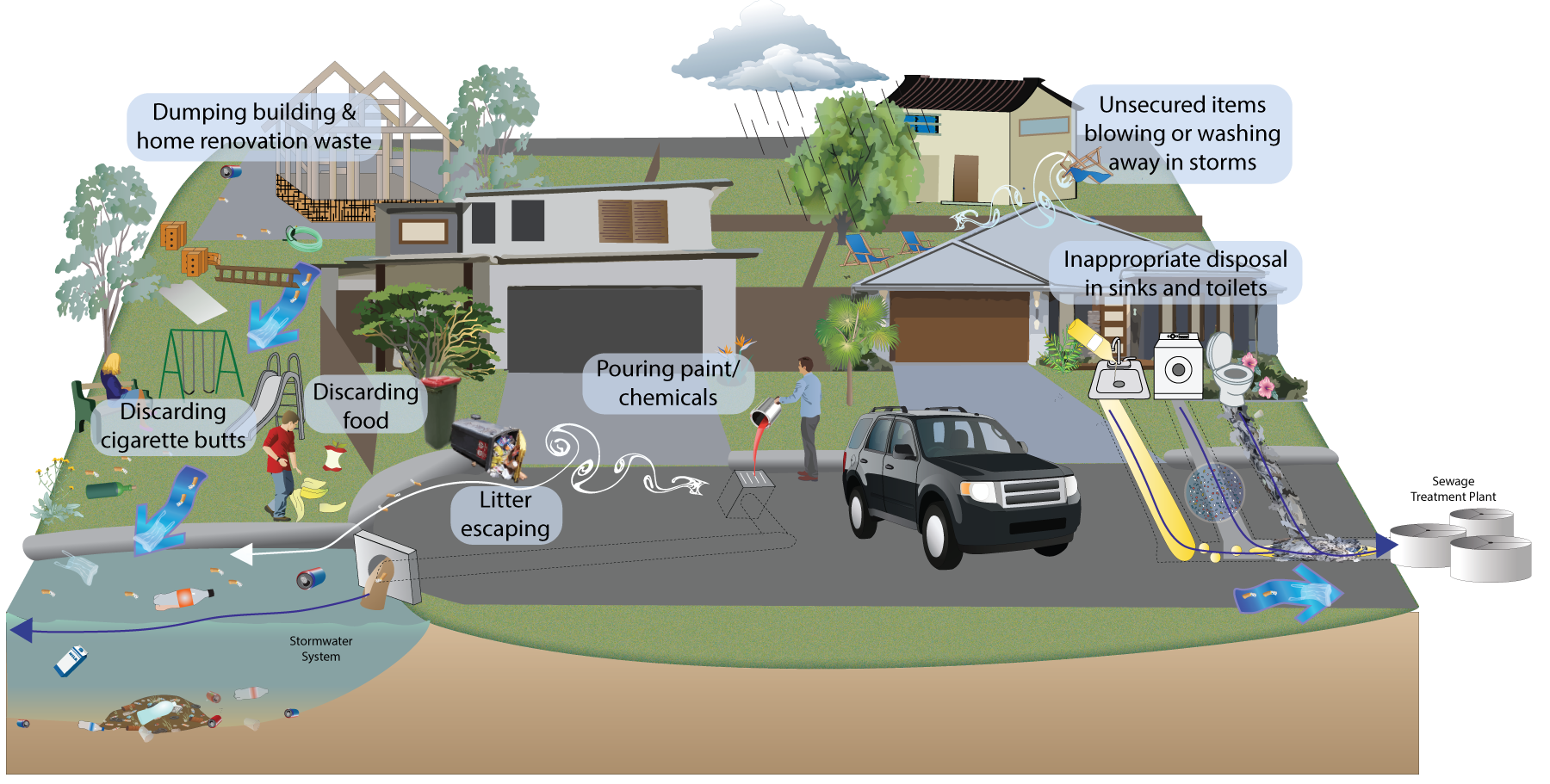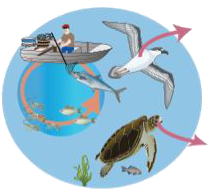|
|
Urban residentialUrban residential Urban residential sector waste can end up in the environment from:
While much of the urban residential waste burden comes from a diverse range of sources, a large proportion of urban residential waste is collected directly from households. Council bin collection services collected over 2 million general waste bins weekly from Queensland households during 2022-2023, along with over 1.9 million recyclables (for paper and packaging materials) and over 526,941 green waste bins (for garden and food organic wastes)[2]. Building and home renovations can lead to residents or contractors dumping building material, including asbestos. The Queensland Government publishes information on the management and removal of asbestos. Other litter items include cigarette butts discarded on the ground and on the street, as well as the flushing of non-disposable items into the sewage system. Additionally, thousands of tonnes of pharmaceuticals and personal care products are of particular concern, due to the thousands of tonnes entering the waterways from personal use[1]. Another major source of litter in residential areas is the dumping of household waste onto kerbsides outside the timeframe for designated council kerbside collection. Although this is often done as a means of re-using household items by giving them to others instead of throwing them away, it is considered illegal dumping and may result in a fine. Urban residential waste may move through the environment via four pathways: References
Last updated: 14 April 2025 This page should be cited as: Department of Environment, Science and Innovation, Queensland (2025) Urban residential, WetlandInfo website, accessed 8 May 2025. Available at: https://wetlandinfo.des.qld.gov.au/wetlands/management/pressures/litter-illegal-dumping/sources/urban-residential/ |

 — Department of the Environment, Tourism, Science and Innovation
— Department of the Environment, Tourism, Science and Innovation




